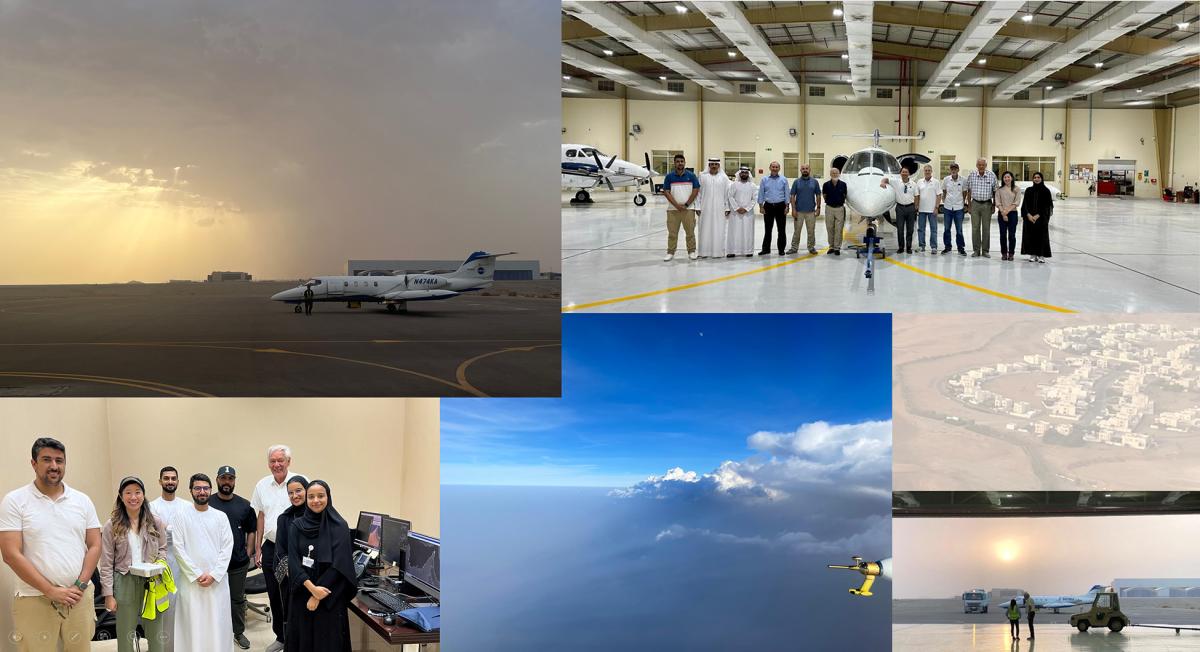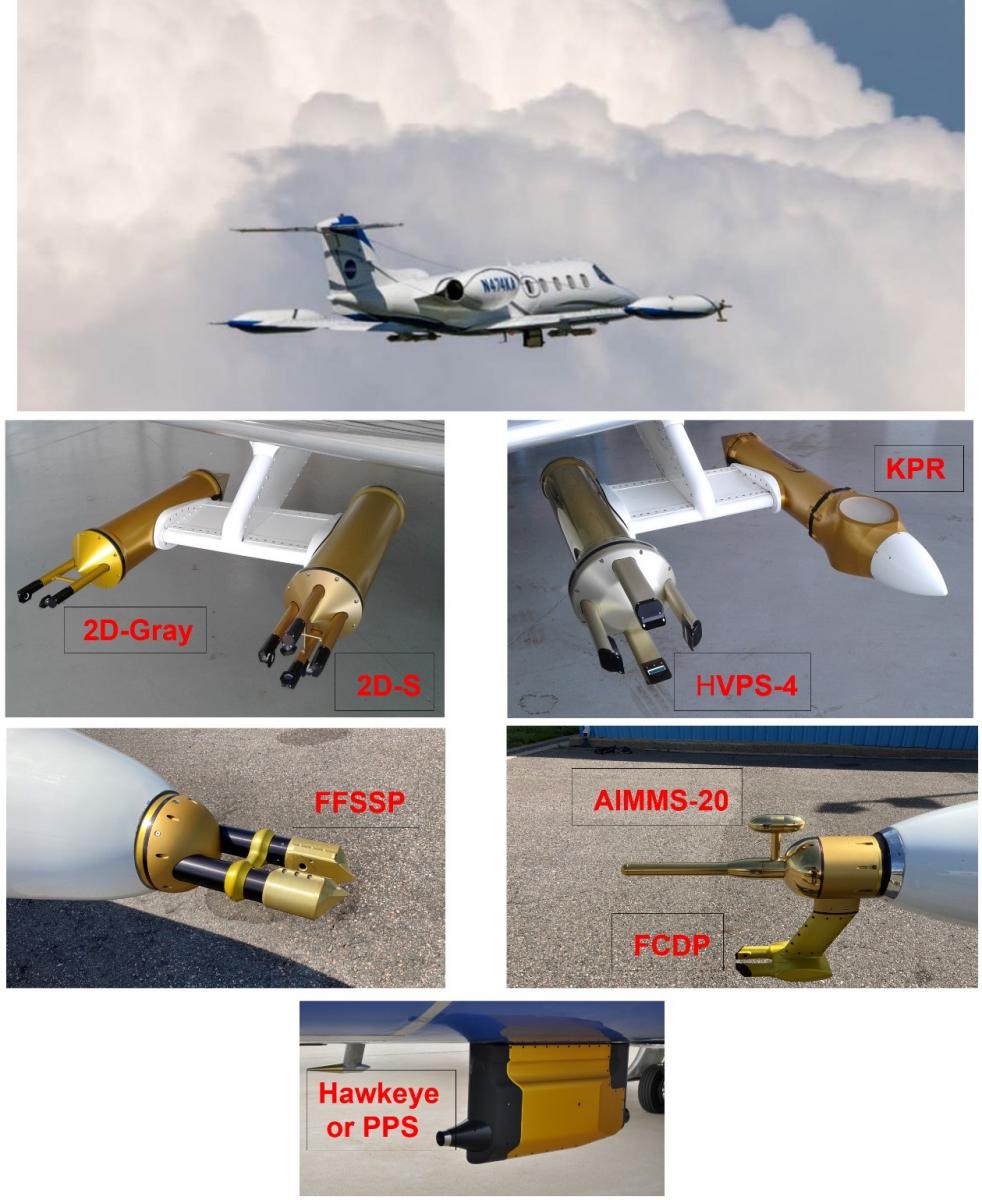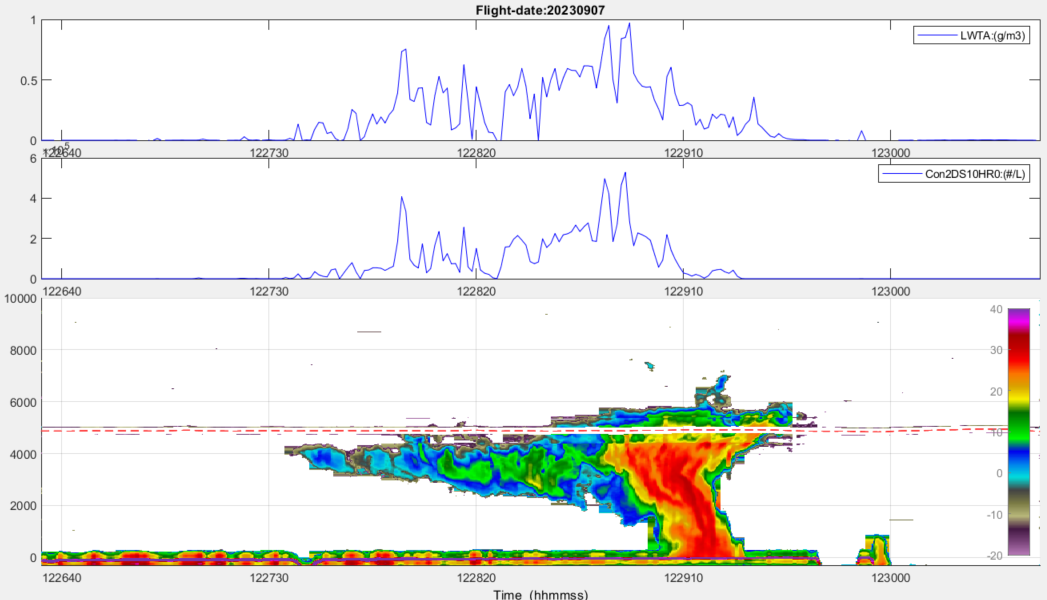UAE Research Program for Rain Enhancement Science 4th Cycle Award (2021)
"The Scientific Basis for Enhancing Rain in the UAE via
Hygroscopic Seeding with Nano-Material”
UAE Research Program for Rain Enhancement Science 4th Cycle Award
Selected out of 81 international research proposals that included 378 scientists and researchers affiliated with 159 research institutes from 37 countries on five continents, SPEC Inc. is the first institution to receive a second UAE Research Program for Rain Enhancement Science (UAEREP) award in January, 2021. The first award was given to SPEC in 2017 during the 2nd Cycle UAEREP program. Under the 4th Cycle award, SPEC will build on results obtained from its 2nd Cycle 2019 field project in the UAE conducted with its Learjet research aircraft. Data collected from the previous field campaign led to the three journal publications (Wehbe et al. 2021; Lawson et al. 2022, 2023) that describe a natural secondary ice process (SIP) that can lead to rain enhancement through hygroscopic seeding at cloud base. SPEC will return in 2023 with its Learjet research aircraft and join the NCM King Air to investigate the effects of seeding with nano-material coated salt. Joining SPEC in the 4th Cycle award are two former 2nd Cycle awardees, the Finnish Meteorology Institute (FMI) and the University of Reading (UoR). FMI will continue numerical modeling studies and include the effects of the SIP to determine the degree of rain enhancement on the ground. UoR will continue its research on a miniature electrical corona emitter that is intended to coagulate subcloud aerosols and improve hygroscopic seeding with nano materials at cloud base.
Project Overview
Through this award, a team of scientists from SPEC, FMI and UoR will combine field observations and modeling efforts to investigate a new approach to rain enhancement that triggers a natural SIP in some cumulus clouds (see presentation slides). When large "supercooled" drops – drops that initially remain unfrozen at temperatures below zero degrees Celsius – form in clouds and some of them freeze, they can emit tiny ice particles. These tiny ice particles then collide with other large supercooled drops, producing an avalanche process that freezes the remaining large drops, producing small hail stones. The hail stones then melt into rain after they fall into the warm sub-cloud layer. Seeding in the updraft at cloud base with water attracting material can facilitate the development of large drops that are required to generate the natural secondary ice process. In the 2023 field campaign, the SPEC Learjet investigated in situ microphysical effects aloft of seeding at cloud base by the NCM King Air using salts coated with nano material. Using sophisticated instrumented aircraft and radar, this experiment studied this process in cumulus clouds in the UAE to evaluate the potential for rain enhancement.


18-Month SDC/NCM Site Visit
Science Background and Proposal Objectives
This work seeks to examine the effects of hygroscopic seeding on the formation of large supercooled cloud drops that are connected with rapid glaciation and heavy rainfall. The research explores how hygroscopic seeding affects cumulus cloud drop development and ice formation, focusing on conditions that would not promote large drop formation without stimulation from hygroscopic seeding. The Learjet is an in-situ cloud microphysics aircraft that is a proven platform for rapidly climbing with updraft cores and documenting the development of coalescence (i.e., the development of large, millimeter-diameter drops).
Overall Scientific Objective: Determine if hygroscopic seeding in the updrafts at the base of certain cumulus clouds can increase the drop size distribution sufficiently to initiate a natural secondary ice production process in the supercooled region of the updraft.
In-Situ Measurements and Sampling Platform
The SPEC Learjet was flown in updraft cores during the 2023 field campaign to collect in situ data. As shown in the photographs below, the Learjet is outfitted with a suite of microphysical sensors, which measure particle concentration, area, and size, and collect high resolution images for phase and shape identification. In addition, the Learjet is equipped with an up/down pointing Ka-Band radar that was not available for the 2019 campaign.
The specific flight profile conducted by the Learjet is described as follows. Once suitable cumulus clouds are present in an area, the Learjet makes a few passes just below cloud base to document the cloud base temperature and pressure, which is used to “categorize” the cloud and also for computation of adiabatic liquid water content (LWC) in post analysis. Next, the Learjet makes passes just above cloud base to document the drop size distribution and then climbs to the – 5 °C level. The crew selects a newly-developing cloud turret to penetrate and documents the LWC, drop spectra and updraft characteristics. The goal is to find a cloud with an ice-free or nearly ice-free updraft core whose updraft exceeds 5 m s-1 and is sustained for at least 3 s (about 0.4 km) along the flight path. Once a suitable turret is located, the cloud is categorized as a “candidate” and the Learjet climbs and makes repeated penetrations at the – 8 °C, – 12 °C, and – 15 °C levels. The figure on the following page shows and example of radar and in-situ cloud particle data collected by the Learjet during the 2023 field campaign.
Numerical Simulations
Modeling work at FMI has focused predominantly on the secondary ice parameterizations and extending the model result database. One of the more significant developments includes the implementation of a more elaborate secondary ice parameterization. Previously, only rather simple empirical expressions were included in the model (such as Lawson et al., 2015). The results show the SIP production scales with the injection of large hygroscopic particles (diameter approximately 5 µm).

SPEC Learjet outfitted with microphysical instrumentation
Corona Emitters
The original prototype charge emitters were reconfigured to use higher power 28 VDC power supplied from the aircraft, which considerably increases the amount of corona current possible. The upgraded emitters produce up to 1015 unit charges per meter flown. For a 1-m3 plume with 1,000 cm-3 particle concentration, this would result in approximately 106 unit charges available per aerosol particle, which is expected to significantly increase the probability of particle coagulating.
The high-power corona emitter device is contained in a housing similar to the NCM King Air flare dispenser. The corona emission of singular polarity charge leads to a buildup of opposite charge on the corona flare and the aircraft. To minimize this charge buildup (because of the size of the aircraft this charge will be leaked to the surrounding air as well) the device is able to alternately emit positive and negative charge thus neutralizing any charge buildup over time.

Example of Ka-Band radar data collected during the 2023 field campaign
First Year:
In March 2022 Dr. Lawson and Dr. Bruintjes visited Omani officials in Muscat to arrange for participation by the Oman Directorate of Meteorology to participate in the July – August field campaign, and to do ground work to obtain permission for the NCM King Air and the SPEC Learjet to fly in Omani airspace. In the summer of 2022 the SPEC Learjet collected situ microphysical and radar observations in cumulus clouds to assess the performance of the new in situ HVPS-4 optical array probe and the Ka-Band radar. From autumn of 2022 until spring of 2023 SPEC coordinated with NCM and Oman officials to prepare for the 2023 summer field campaign. Development work on the corona emitters was accomplished by the UoR and the FMI continued to make progress in incorporating secondary ice processes into their numerical model.
Second Year:
After delays due to inability to gain permission from the UAE GCAA to fly in UAE airspace, and delays due to requirement to install a traffic alert and collision avoidance system in the Learjet, the field campaign started on 21 August 2023 and ended on 16 September 2023.
Third Year:
Analyzed data collected by the SPEC Learjet during the 2023 field campaign. Report results at the American Meteorology Society Annual Meeting session on Weather Modification and prepare journal papers and final report.
References
Lawson, R. P., Woods, S., and H. Morrison, 2015: The microphysics of ice and precipitation development in tropical cumulus clouds. J. Atmos. Sci., 72, 2429-2445.
Lawson, R. P., R. Bruintjes, S. Woods and C. Gurganus, 2022: Coalescence and secondary ice production in cumulus congestus clouds. J. Atmos. Sci., 79, 953-972.
Lawson, R. P. and Co-authors, 2023: The secondary production of ice in cumulus experiment (SPICULE), Bull. Amer. Soc., January 2023, E51 – E76, https://doi.org/10.1175/BAMS-D-21-0209.1
Stevens, B., G. Feingold, W. R. Cotton, and R. L. Walko, 1996a: Elements of the microphysical structure of numerically simulated nonprecipitating stratocumulus. J. Atmos. Sci., 980–1006.
Tzivion, S., G. Feingold, and Z. Levin, 1987: An efficient numerical solution to the stochastic collection equation. J. Atmos. Sci., 44, 3139–3149.
Wehbe, Y., and Co-authors, 2021: Analysis of aerosol-cloud interactions and their implications for precipitation formation using aircraft observations over the United Arab Emirates. Atmos. Chem. Phys. 21, 12543-12560.
